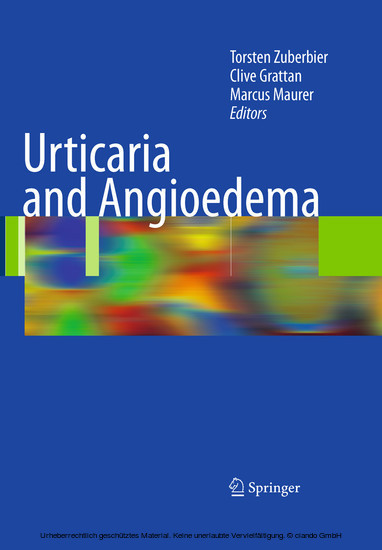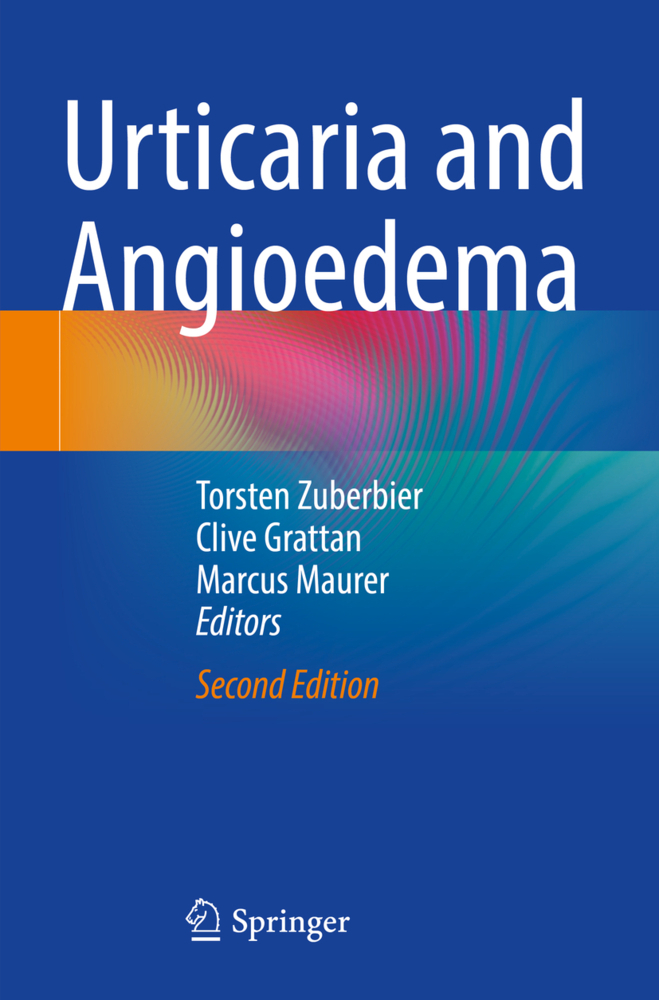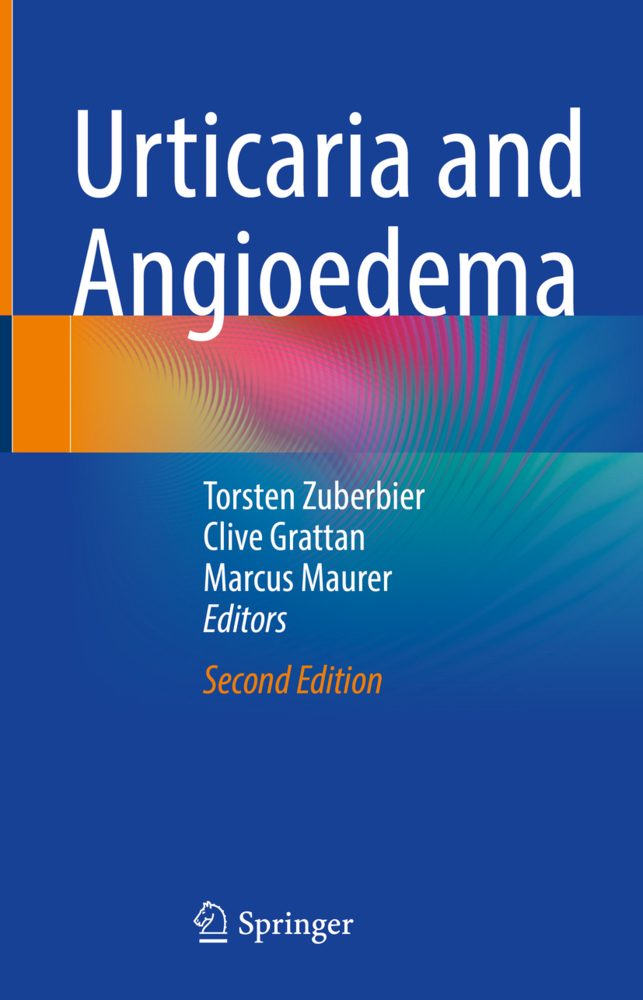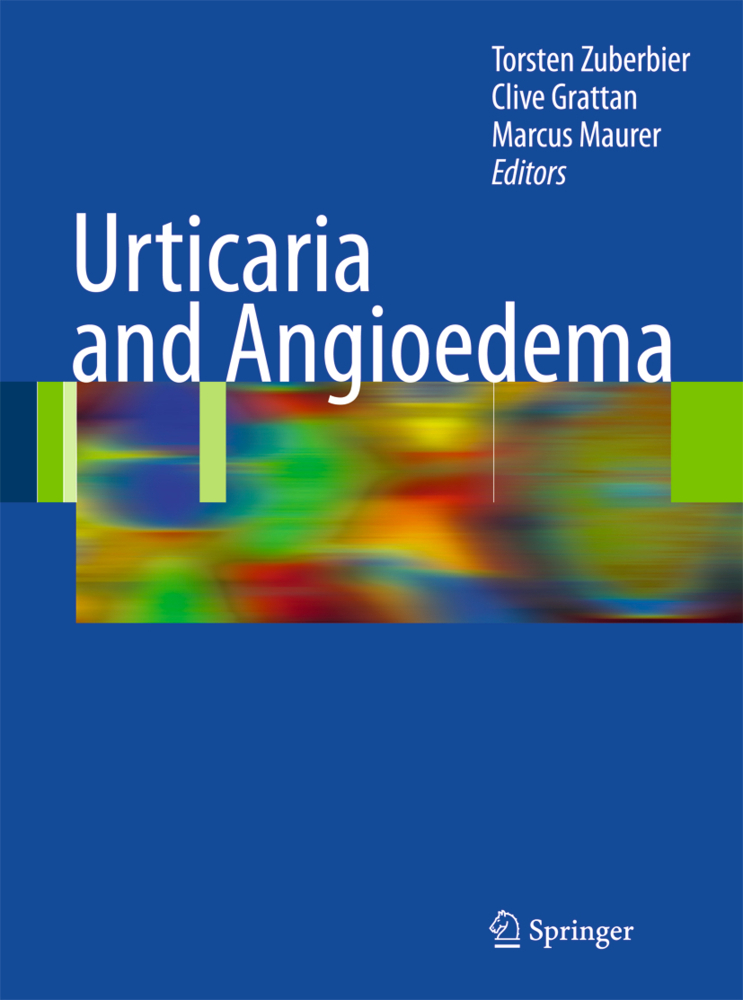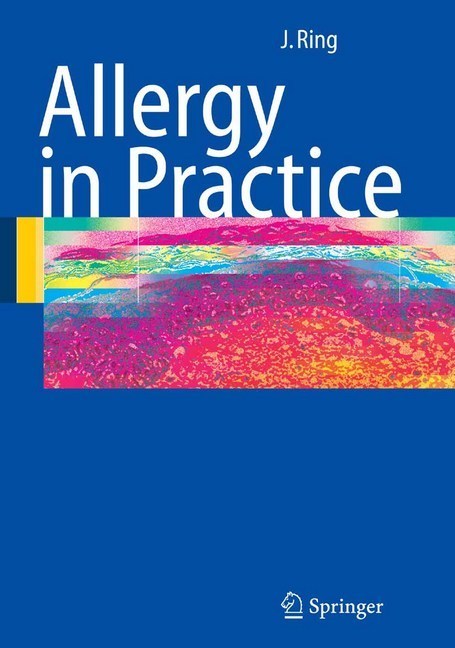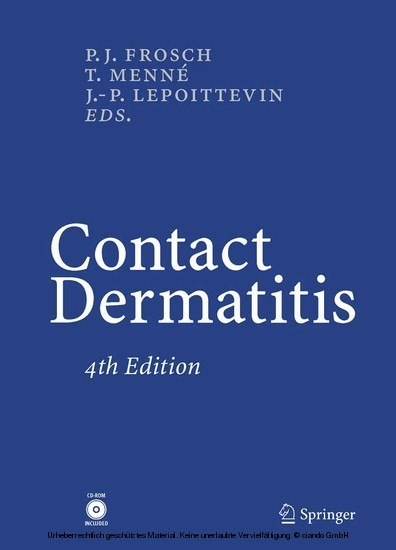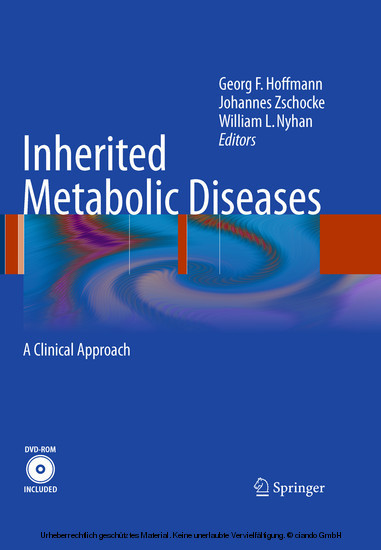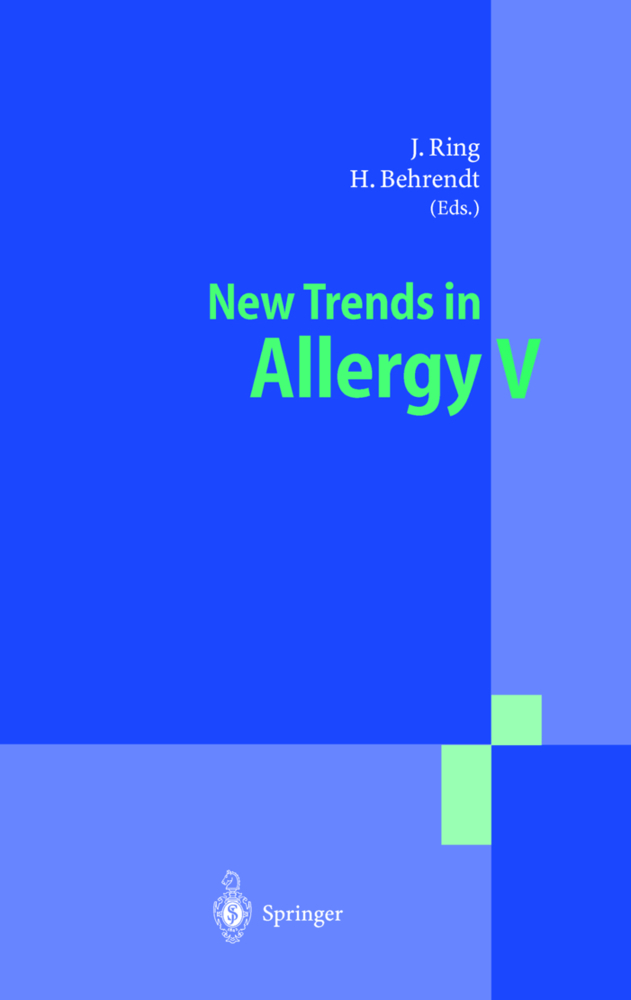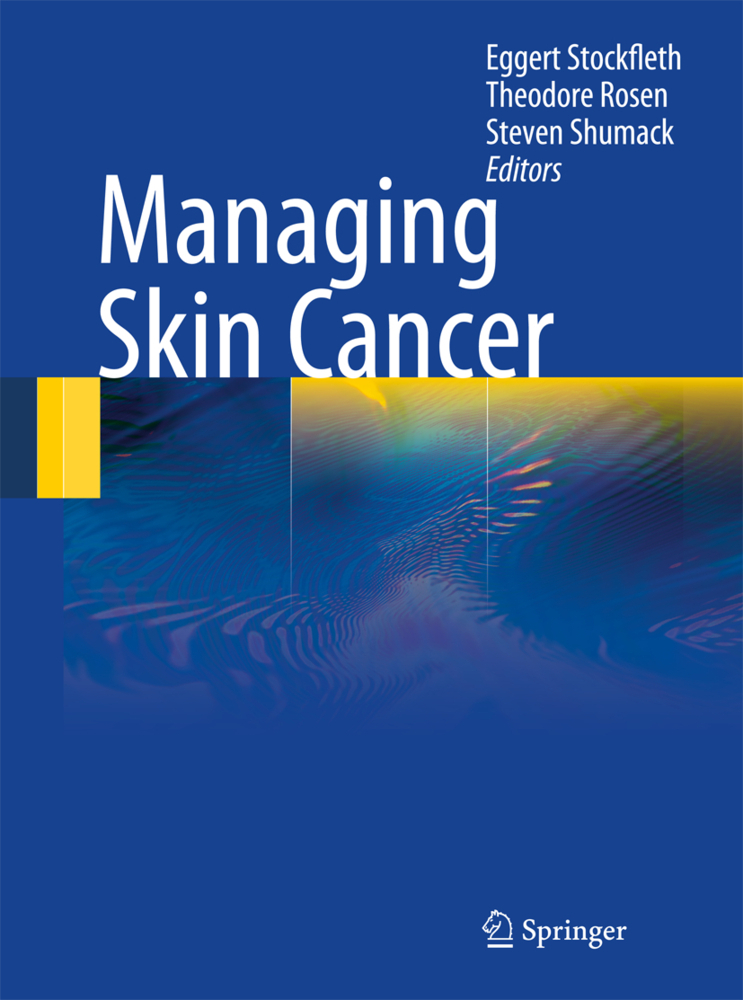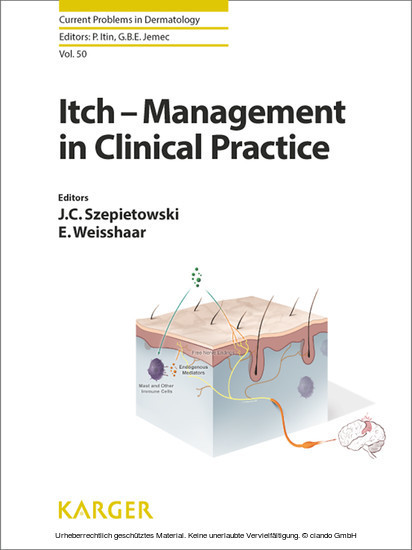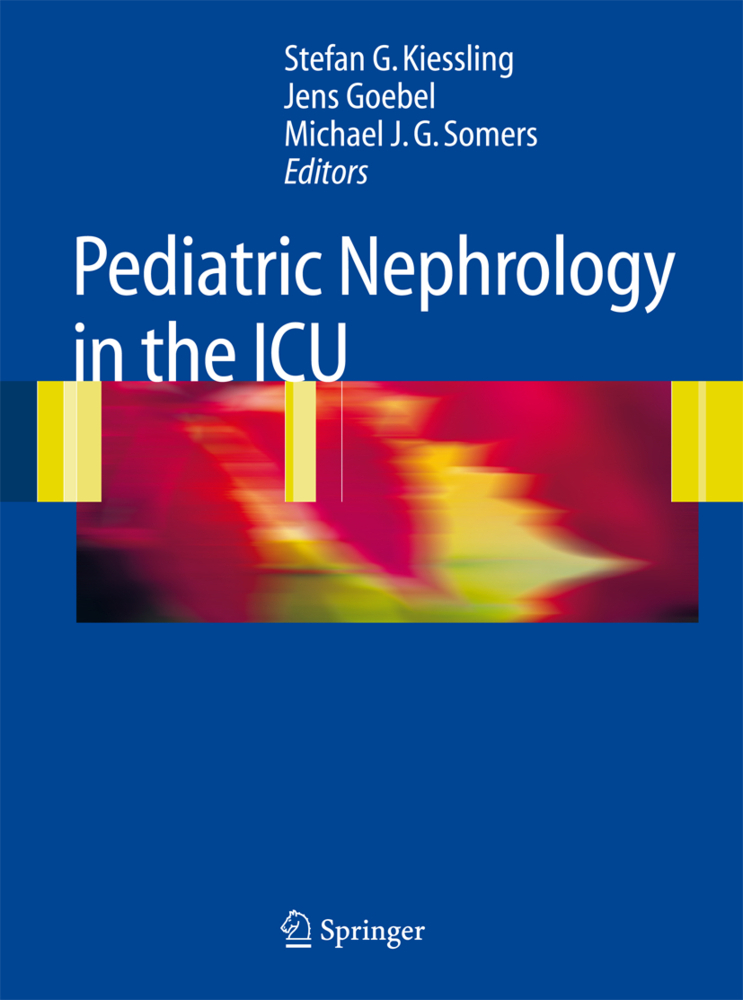Urticaria and Angioedema
Urticaria is one of the most common diseases in dermatology and allergy. Unlike many other diseases, the ? eeting nature of the wheals makes ? rst diagnosis by both patients and phy- cians in many cases easy. However, this only refers to the ordinary wheals. The disease itself is highly complex in nature, with variety of clinical manifestations ranging from pinpoi- sized wheals to extensive angiodema. Complexity is also seen in the diversity of possible eliciting factors, the many different clinical subtypes and the therapeutic responsiveness. Only in recent years has a better understanding of the diversity in the different subtypes led to new classi? cations and new evidence-based guidelines for diagnostics and mana- ment of the disease. While mast cells are in the center of most urticaria reactions, it is now clearly understood that the responsible mediators are not only limited to histamines. The current book appears in a series of books by Springer. In 1986, the ? rst monograph was edited by Professor Henz née Chanewsky. Since then, two updates of the book have appeared in the German language with Professor Henz as ? rst editor and T. Zuberbier, J. Grabbe, and E. Monroe as the co-editors of the most recent English version, published in 1998. All these books have been written as a joint effort of Professor Henz together with her team at the Department of Dermatology at the Virchow Clinic, Humboldt University, Berlin.
1;Urticaria and Angioedema;2 1.1;Title Page;3 1.2;Copyright page;4 1.3;Preface;5 1.4;Contents;6 1.5;Contributors;8 1.6;Chapter 1;10 1.6.1;History of Urticaria;10 1.6.1.1;1.1 Introduction;11 1.6.1.2;1.2 The Cellular and Molecular Basis of Urticaria: First Steps;11 1.6.1.3;1.3 The Enigma of Chronic "Idiopathic" Urticaria;12 1.6.1.4;1.4 Treatment of Urticaria: Antihistamines;13 1.6.1.5;1.5 Take Home Pearls;14 1.6.1.6;References;15 1.7;Chapter 2;17 1.7.1;Aetiopathogenesis of Urticaria;17 1.7.1.1;2.1 Lessons from Histopathology;18 1.7.1.2;2.2 A Central Role for the Mast Cell;19 1.7.1.2.1;2.2.1 Mast Cell Mediators of Urticaria;20 1.7.1.2.1.1;2.2.1.1 Histamine;20 1.7.1.2.1.2;2.2.1.2 Cysteinyl Leukotrienes;20 1.7.1.3;2.3 Involvement of Other Infl ammatory Cells in Urticaria;21 1.7.1.4;2.4 Urticaria Not Implicating the Mast Cell (Non-histaminergic);22 1.7.1.5;2.5 What Causes Mast Cell Mediator Release in the First Place?;23 1.7.1.5.1;2.5.1 Immunological Stimuli of Mast Cell Secretion;25 1.7.1.5.1.1;2.5.1.1 Allergens;25 1.7.1.5.1.2;2.5.1.2 Autoantibodies;25 1.7.1.5.1.3;2.5.1.3 Complement;26 1.7.1.5.2;2.5.2 Mast Cell Liberators and Pseudoallergens;26 1.7.1.6;2.6 Tests for Autoimmune Urticaria;26 1.7.1.6.1;2.6.1 Laboratory Assays;26 1.7.1.6.2;2.6.2 The Autologous Serum Skin Test;27 1.7.1.7;2.7 A Concept Model for Understanding Chronic Urticaria;27 1.7.1.8;2.8 Clinical Take Home Pearls;29 1.7.1.9;References;29 1.8;Chapter 3;32 1.8.1;Classification of Urticaria;32 1.8.1.1;3.1 Definition;32 1.8.1.2;3.2 Histology;35 1.8.1.3;3.3 Classifi cation of Urticaria on the Basis of Its Symptoms, Duration, Frequency, and Causes;35 1.8.1.4;3.4 Take Home Pearls;38 1.8.1.5;References;38 1.9;Chapter 4;39 1.9.1;Impact of Urticaria: QOL and Performance;39 1.9.1.1;4.1 Take Home Pearls;42 1.9.1.2;References;42 1.10;Chapter 5.1;43 1.10.1;Acute Urticaria;43 1.10.1.1;5.1.1 Definition;43 1.10.1.2;5.1.2 Epidemiology;44 1.10.1.3;5.1.3 Clinical Aspects;44 1.10.1.4;5.1.4 Aetiology;45 1.10.1.5;5.1.5 Natural Course;46 1.10.1.6;5.1.6 Diagnosis;47 1.10.1.7;5.1.7 Treatment;47 1.10.1.8;5.1.8 Take Home Pearls;48 1.10.1.9;References;48 1.11;Chapter 5.2;50 1.11.1;Chronic Urticaria;50 1.11.2;5.2.1 Definition;50 1.11.3;5.2.2 Clinical Picture;52 1.11.4;5.2.3 Epidemiology;52 1.11.5;5.2.4 Pathogenesis;52 1.11.6;5.2.5 Causes and Triggers;53 1.11.6.1;5.2.5.1 CU Due to Autoreactivity;53 1.11.6.2;5.2.5.2 CU Due to Infection;55 1.11.6.3;5.2.5.3 CU Due to Intolerance;55 1.11.6.4;5.2.5.4 CU Due to Other Causes;55 1.11.6.5;5.2.5.5 Triggers and Eliciting Factors;56 1.11.7;5.2.6 Diagnostics;56 1.11.8;5.2.7 Therapy;57 1.11.8.1;5.2.7.1 Removing Underlying Causes, Relevant Triggers and Aggravating Factors;57 1.11.8.2;5.2.7.2 Mast Cell-Targeting Therapies;58 1.11.8.2.1;5.2.7.2.1 Inhibitors of Mast Cell Activation;58 1.11.8.2.2;5.2.7.2.2 Antagonists of Mast Cell Activators;59 1.11.8.3;5.2.7.3 Blocking of Mast Cell Mediators;59 1.11.9;5.2.8 Take Home Pearls;59 1.11.10;References;60 1.12;Chapter 5.3;62 1.12.1;Dermographic and Delayed Pressure Urticaria;62 1.12.1.1;5.3.1 Symptomatic Dermographism (Dermatographism: Urticaria Factitia);62 1.12.1.1.1;5.3.1.1 Making the Diagnosis;62 1.12.1.1.2;5.3.1.2 Taking the History;62 1.12.1.1.3;5.3.1.3 Clinical Findings;63 1.12.1.1.4;5.3.1.4 Confi rming the Diagnosis;63 1.12.1.1.5;5.3.1.5 Diagnostic Implications and Treatment;63 1.12.1.1.6;5.3.1.6 Take Home Pearls;64 1.12.1.2;5.3.2 Delayed Pressure Urticaria;64 1.12.1.2.1;5.3.2.1 Making the Diagnosis;65 1.12.1.2.2;5.3.2.2 Taking the History;65 1.12.1.2.3;5.3.2.3 Clinical Features;65 1.12.1.2.4;5.3.2.4 Diagnostic Implications and Treatment;66 1.12.1.2.5;5.3.2.5 Take Home Pearls;66 1.12.1.3;References;67 1.13;Chapter 5.4;68 1.13.1;Heat and Cold Urticaria;68 1.13.1.1;5.4.1 Introduction: The Disease Spectrum;68 1.13.1.2;5.4.2 Cold and Heat Urticaria;69 1.13.1.2.1;5.4.2.1 Epidemiology;69 1.13.1.2.2;5.4.2.2 Pathogenesis;70 1.13.1.2.3;5.4.2.3 Clinical Features;71 1.13.1.2.4;5.4.2.4 Confi rmation of the Diagnosis;71 1.13.1
Zuberbier, Torsten
Grattan, Clive
Maurer, Marcus
| ISBN | 9783540790488 |
|---|---|
| Artikelnummer | 9783540790488 |
| Medientyp | E-Book - PDF |
| Auflage | 2. Aufl. |
| Copyrightjahr | 2010 |
| Verlag | Springer-Verlag |
| Umfang | 158 Seiten |
| Sprache | Englisch |
| Kopierschutz | Digitales Wasserzeichen |

